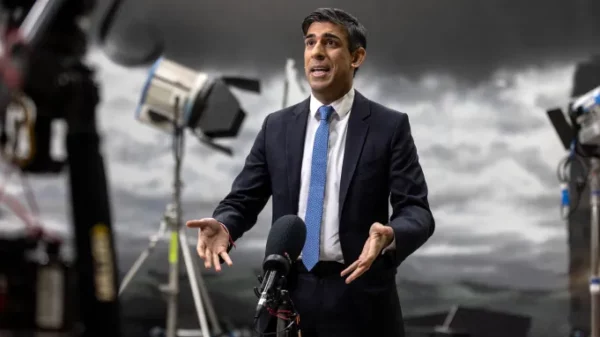The last 12 months have proved a highly complex period for marketing and the wider creative industries as a whole – with numerous global factors altering marketplace patterns beyond recognition.
The deep societal and economic scars left by Covid have finally begun to recede – only to give way to what has rapidly developed into the worst drop in living standards since the Second World War.
Although we are seeing increasingly bold innovations that are revolutionising the industry, such as influencer marketing and rise of social, tried and trusted mediums such as out-of-home and TV advertising have been able to adapt to changing consumer demand and to a certain extent, redefine themselves.
Marketers’ trials and tribulations in 2022 have not been confined to economic conditions however, with momentous changes to how the industry operates online coming further down the pipeline – Google is set to fundamentally alter the way in which cookies function in less than two years.
Marketing spend: less is more
With current business conditions set to become markedly tougher before they begin to get anywhere near better, marketing experts have zoned in on the need for brands to prioritise a ‘less is more’ approach, with a more streamlined, efficient marketing strategy.
As Jack Whiting, CEO of London-based Imagination Growth Marketing notes, brands must be wary of cutting too many corners: “It’s key for brands to spend more, but in a more efficient way to dominate their markets and continue to be competitive.”
“They have to get it right, what we are seeing is that content is key. Strong content is working much better for brands in their marketing strategy which is great for increasing marketing budgets and keeping overall costs down while maintaining a positive return.”
Time and time again we are seeing that the most logical way of dealing with intensely difficult market forces is not to blindly cut costs in a bid to save the bottom line, but rather to focus on shoring-up long term growth with clever re-targeting.
“I’ve heard of so many brands that have reduced budgets and are questioning why their market share is down,” Whiting adds. “The brands I’ve worked with have increased budgets and have seen overall cost go down and revenue and opportunity go up.”
Consumer data and cutting the cookies
With the announcement last year that major tech firms Google and Apple will be phasing out third-party cookies by the end of 2024, a seismic shift is set to take place in the way the marketing and advertising industries gather and re-purpose customer data.
Subscribe to Marketing Beat for free
Sign up here to get the latest agency-related news sent straight to your inbox each morning
This is proving to be a monumental headache for marketers, many of whom will need to entirely re-structure the way in which their organisations access customer data.
As Jamie Toulze – director of security – trust, privacy and compliance at marketing services firm Iterable – points out, adaptability to new ways of working will be make or break: “It’s incumbent on marketers to seek other routes to consumer satisfaction, go back to the basics, and work on building strong relationships based on trust.
“The marketers that will have the most success in a post-cookie world will be those who prioritise transparency and honesty, both when it comes to how data is collected and how it is used by a brand.”
Marketing growth expert Danny Denhard concurs, adding: “Advertising will improve and marketing will become less about chasing the customer around the internet with poor and outdated retargeting, and instead being smarter about how it targets effectively.”
Time for change (or changing with the times)
While the last 12 months have proved difficult for many within the industry, it hasn’t all been doom and gloom – with many new and exciting innovations taking place in the ways in which marketers operate.
Social media and influencer marketing in particular have now firmly established themselves as bona fide channels, warranting massive investment and even the creation of entire departments at major creative agencies such as Ogilvy.
Influencer marketing has become essential for brand success in the fashion industry in particular, according to Robin Ward, head of sales at influencer platform LTK.
“As data-backed influencer marketing campaigns continue to deliver unmatched results, more brands are taking notice and positioning creators and influencers as the cornerstone of their marketing strategies,” he says.
“The world of ecommerce may be vast – and growing all the time – but while influencers and creators continue to provide consumers with a more elegant, personalised and focused shopping experience, they will continue to be the accelerators of the industry and the curators of brands.”
A fundamental shift away from traditional modes of marketing is already underway and has been for several years.
With these changes set to come to a head over the next decade, CEEK Marketing founder and managing director, Charlie Terry explains: “The landscape has changed beyond all measure, yet we still have individual agencies covering media, digital, social and marketing.
“It’s not about advertising to the masses, it’s about talking to niche communities, something which traditional advertisers struggle with. Media consumption and consumer behaviour is evolving but the way many businesses run is not. Maybe it’s time we stopped worrying about which box things sit in and be more fluid with our approach.”
Looking back on the last 12 months, it is clear that despite intensely arduous economic circumstances, innovation has been far from stifled – with new and existing mediums thriving and adapting to constantly changing market conditions ahead of what is set be one of the stormiest decades in recent memory.









